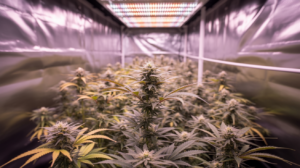Cannabis Micropropagation: A Complete Guide

Micropropagation is revolutionizing cannabis cultivation by offering a powerful method for producing genetically identical plants at scale. This technique, widely used in the agricultural and horticultural industries, involves the in vitro (in glass) culture of plant tissues in a controlled environment, enabling the rapid multiplication of cannabis plants with desirable traits. As the cannabis industry grows, micropropagation is emerging as a key tool for commercial growers looking to maintain consistency, improve disease resistance, and maximize production efficiency.
In this comprehensive article, we will explore the science behind cannabis micropropagation, the advantages it offers over traditional propagation methods, the step-by-step process, and its potential impact on the future of cannabis cultivation.
What Is Cannabis Micropropagation?
Micropropagation is a form of cloning that uses small pieces of plant tissue, such as meristems or nodal segments, to grow new plants. In cannabis cultivation, the goal of micropropagation is to produce genetically identical plants that retain all the qualities of the mother plant, including potency, yield, aroma, and resistance to disease. This is particularly useful for cultivators who need to reproduce high-performing strains with precision and at scale.
Unlike traditional methods of cloning, which involve rooting cuttings in soil or water, micropropagation takes place in sterile laboratory conditions. This ensures that the plants are free from pests, diseases, and other environmental stressors that can compromise their growth and quality.
Key Concepts in Cannabis Micropropagation
- Tissue Culture: Micropropagation is a type of tissue culture, a technique that grows plants from cells, tissues, or organs in a nutrient-rich, sterile environment. The tissue used for micropropagation is typically taken from the apical meristem, a region of actively dividing cells located at the tips of shoots and roots.
- Aseptic Conditions: One of the most critical aspects of micropropagation is maintaining a sterile environment. Because plant tissues are highly vulnerable to contamination from bacteria, fungi, and other microorganisms, all materials used in the process must be sterilized, and the work is conducted in a controlled environment such as a laminar flow hood.
- Growth Media: Plant tissues are cultured in a nutrient-rich medium that provides essential minerals, vitamins, and plant growth regulators (PGRs). These PGRs, including auxins and cytokinins, control the balance between root and shoot development, allowing the tissue to grow into a complete plant.
Why Micropropagation for Cannabis?
Cannabis growers face several challenges that make traditional propagation methods, such as seed germination and cutting-based cloning, less effective on a commercial scale. Seeds, while genetically diverse, are unpredictable in terms of their growth patterns and final product. Cutting-based cloning, while effective for producing identical plants, has limitations in terms of scalability and consistency, and it is prone to the spread of diseases.
Micropropagation, on the other hand, offers several distinct advantages:
- Rapid Multiplication: A single piece of tissue can be used to produce hundreds or even thousands of plants in a relatively short time. This makes micropropagation an ideal technique for large-scale commercial operations that need to maintain a consistent supply of cannabis plants.
- Disease-Free Plants: Because micropropagation is done in a sterile environment, the plants are free from pathogens such as fungi, bacteria, and viruses that can infect traditional clones. This is especially important in cannabis cultivation, where diseases like powdery mildew and fusarium wilt can devastate crops.
- Genetic Uniformity: Micropropagation ensures that every plant is genetically identical to the original mother plant, which is crucial for maintaining the quality and consistency of cannabis products. This level of control is difficult to achieve with seed-grown plants, which exhibit genetic variability.
- Conservation of Elite Strains: Micropropagation allows growers to preserve and propagate elite strains that have desirable traits such as high THC or CBD content, unique terpene profiles, or superior disease resistance. This ensures that these valuable strains are not lost due to genetic drift or environmental factors.
The Process of Cannabis Micropropagation
Micropropagation is a highly technical process that requires specialized equipment, materials, and expertise. Below is a step-by-step breakdown of the micropropagation process for cannabis:
1. Selection of Explants
The first step in micropropagation is to select the plant tissue, or “explant,” that will initiate the culture. For cannabis, explants are typically taken from the apical meristem or nodal segments of a healthy mother plant. The apical meristem is particularly valuable because it is free from viruses and other pathogens that may be present in older plant tissues.
2. Sterilization of Explants
Once the explants have been selected, they must be sterilized to eliminate any surface contaminants that could interfere with the tissue culture process. This is done by treating the explants with a sterilizing agent such as bleach or ethanol, followed by rinsing in sterile water. The goal is to remove any bacteria, fungi, or spores that could contaminate the culture.
3. Initiation of Culture
The sterilized explants are then placed on a growth medium in a sterile culture vessel, such as a petri dish or test tube. The growth medium contains essential nutrients, sugars, vitamins, and plant growth regulators (PGRs) that support the development of the explant into a full plant. The specific combination of PGRs will depend on the desired outcome—higher levels of cytokinins, for example, promote shoot growth, while auxins encourage root development.
4. Shoot Multiplication
As the explants begin to grow, they will produce shoots that can be further multiplied through subculturing. In this phase, the new shoots are separated and transferred to fresh growth media to encourage further shoot production. This step can be repeated multiple times to produce a large number of identical plants from a single explant.
5. Rooting
Once a sufficient number of shoots have been produced, the next step is to encourage root development. This is typically done by transferring the shoots to a medium with a higher concentration of auxins, which stimulate root formation. In some cases, rooting may occur in a separate rooting medium or under different environmental conditions.
6. Acclimatization
After the plants have developed both shoots and roots, they are ready to be transferred from the in vitro environment to a natural growing medium such as soil or coco coir. This step, known as acclimatization, is critical because the plants need to adjust to the lower humidity and increased exposure to light that they will experience in a greenhouse or outdoor environment. The plants are typically transferred to a controlled environment where they can gradually adapt before being moved to their final growing location.

Challenges and Considerations in Cannabis Micropropagation
While micropropagation offers many benefits, it is not without its challenges. Successfully propagating cannabis through tissue culture requires specialized knowledge and equipment, and even small mistakes can lead to contamination or failure of the culture. Below are some of the key challenges that growers may face:
1. Contamination
One of the most significant challenges in micropropagation is preventing contamination. Even with meticulous sterilization techniques, it is possible for bacteria, fungi, or other microorganisms to contaminate the culture. Once contamination occurs, it can spread rapidly, destroying the culture and rendering the process unsuccessful.
2. Plant Growth Regulators (PGRs)
The balance of PGRs in the growth medium is critical for the success of micropropagation. Different concentrations of auxins and cytokinins are needed at various stages of the process, and achieving the correct balance can be tricky. Incorrect PGR ratios can result in abnormal growth, such as the production of callus tissue (undifferentiated plant cells) instead of shoots or roots.
3. Acclimatization
Transitioning plants from the in vitro environment to the natural growing medium can be challenging. Plants grown in tissue culture are accustomed to high humidity, low light, and constant nutrient availability, so they may struggle to adapt to the harsher conditions of the outside world. Proper acclimatization techniques are essential for ensuring that the plants survive and thrive after being transferred.
4. Cost and Infrastructure
Setting up a micropropagation lab requires a significant initial investment in equipment, materials, and training. Growers must have access to sterile workspaces, specialized growth media, and expertise in tissue culture techniques. For small-scale growers, the costs associated with micropropagation may outweigh the benefits.
The Future of Cannabis Micropropagation
As the cannabis industry continues to evolve, micropropagation is likely to play an increasingly important role in commercial cultivation. The ability to produce large quantities of disease-free, genetically identical plants with desirable traits offers significant advantages over traditional propagation methods. In addition, advances in tissue culture technology are making micropropagation more accessible and cost-effective for a wider range of growers.
One area of particular interest is the potential for micropropagation to support the development of new cannabis strains. By using tissue culture techniques, breeders can preserve rare or elite strains and experiment with crossbreeding in a controlled environment. This could lead to the development of new strains with enhanced cannabinoid profiles, improved disease resistance, and other valuable traits.
Conclusion
Cannabis micropropagation is a powerful tool that offers numerous benefits for growers seeking to scale their operations, maintain genetic consistency, and produce disease-free plants. While the technique requires specialized knowledge and equipment, its potential to transform the cannabis industry is undeniable. As technology continues to advance and more growers adopt micropropagation techniques, we can expect to see increased efficiency, innovation, and quality in cannabis cultivation.
By understanding the science behind micropropagation and addressing its challenges, cannabis growers can unlock the full potential of this cutting-edge technology and ensure the long-term success of their cultivation efforts.
Suggested Articles
;)
;)
;)




 08 Jul 2025
08 Jul 2025  4 min read
4 min read


 September 20, 2024
September 20, 2024 


RESPONSES (0)
No responses yet. Be the first to respond!